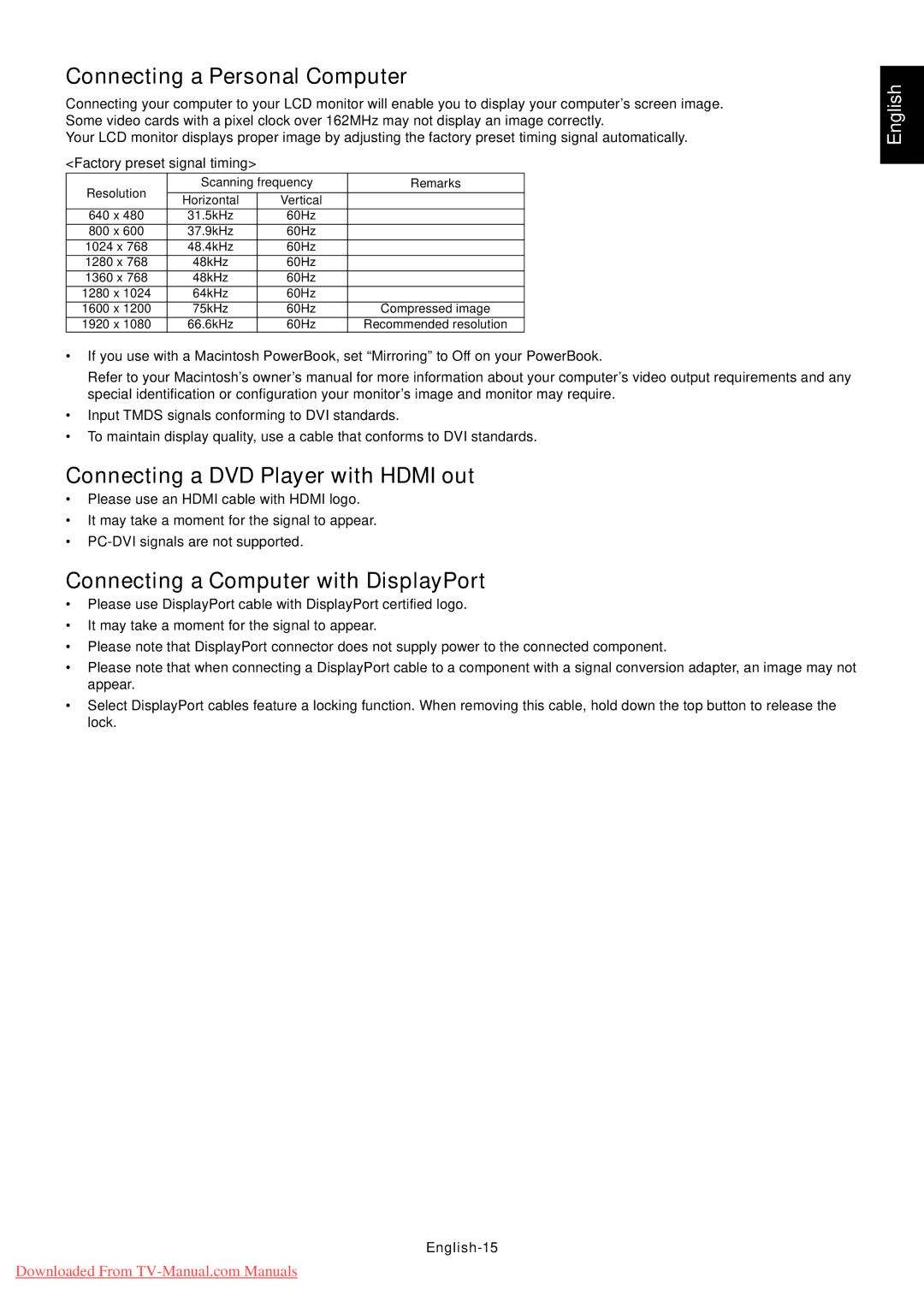Connecting a Personal Computer
Connecting your computer to your LCD monitor will enable you to display your computerÕs screen image. Some video cards with a pixel clock over 162MHz may not display an image correctly.
Your LCD monitor displays proper image by adjusting the factory preset timing signal automatically.
<Factory preset signal timing>
Resolution | Scanning frequency | Remarks | |
|
|
| |
Horizontal | Vertical |
| |
|
| ||
640 x 480 | 31.5kHz | 60Hz |
|
800 x 600 | 37.9kHz | 60Hz |
|
1024 x 768 | 48.4kHz | 60Hz |
|
1280 x 768 | 48kHz | 60Hz |
|
1360 x 768 | 48kHz | 60Hz |
|
1280 x 1024 | 64kHz | 60Hz |
|
1600 x 1200 | 75kHz | 60Hz | Compressed image |
1920 x 1080 | 66.6kHz | 60Hz | Recommended resolution |
¥If you use with a Macintosh PowerBook, set ÒMirroringÓ to Off on your PowerBook.
Refer to your MacintoshÕs ownerÕs manual for more information about your computerÕs video output requirements and any special identification or configuration your monitorÕs image and monitor may require.
¥Input TMDS signals conforming to DVI standards.
¥To maintain display quality, use a cable that conforms to DVI standards.
Connecting a DVD Player with HDMI out
¥Please use an HDMI cable with HDMI logo.
¥It may take a moment for the signal to appear.
¥
Connecting a Computer with DisplayPort
¥Please use DisplayPort cable with DisplayPort certified logo.
¥It may take a moment for the signal to appear.
¥Please note that DisplayPort connector does not supply power to the connected component.
¥Please note that when connecting a DisplayPort cable to a component with a signal conversion adapter, an image may not appear.
¥Select DisplayPort cables feature a locking function. When removing this cable, hold down the top button to release the lock.
English-15
English
Downloaded From
